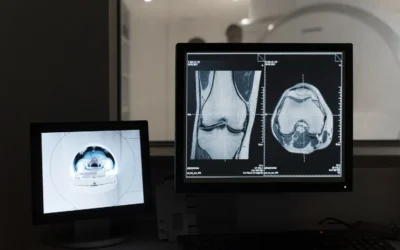Over the past decade, significant strides have been made in understanding the impact of physical exercise on cancer prevention and treatment. Emerging evidence from preclinical and clinical studies consistently highlights the critical role physical activity plays in reducing the incidence and recurrence of various malignancies. This is achieved through the beneficial modulation of cancer hallmarks, which are the defining characteristics that enable cancer to develop and progress. Furthermore, regular physical activity has been found to alleviate certain adverse effects of anticancer therapies, including cardiovascular toxicity and symptoms related to depression and anxiety, all while preserving muscular strength and overall physical health.
Table of Contents
Melanoma and Physical Activity: A Complex Relationship
Overview of Melanoma
Melanoma is a particularly aggressive form of cancer originating from melanocytes, the pigment-producing cells in the skin. It is known for its high metastatic potential and increasing global incidence. In 2020 alone, around 325,000 new cases and 57,000 deaths were reported worldwide. The prognosis and treatment of melanoma vary greatly depending on the stage at diagnosis. Early-stage melanoma is often successfully treated with surgical interventions, boasting a five-year survival rate of 98.4%. For patients with advanced melanoma, the introduction of immunotherapies and targeted therapies has significantly improved survival outcomes.
Historical Perspective on Physical Activity and Melanoma Risk
Historically, the relationship between physical activity and melanoma risk has been a subject of much debate. Early studies suggested a positive association between physical activity and melanoma risk, primarily due to increased exposure to UV radiation during outdoor activities. UV radiation is a well-known risk factor for melanoma as it can induce mutations in melanocytes, leading to their transformation into malignant cells. Consequently, many believed that outdoor physical activity could increase the risk of developing melanoma.
Evolving Understanding: Protective Role of Physical Activity
Recent research, however, paints a different picture. Current evidence does not support the earlier notion that physical activity increases melanoma risk. Instead, it suggests that physical activity, when combined with adequate sun protection measures, may actually play a role in melanoma prevention and progression. Studies now indicate that regular physical activity may help reduce the risk of melanoma and improve outcomes for those diagnosed with the disease. A significant study involving the Norwegian Women and Cancer (NOWAC) cohort found no direct positive association between physical activity, melanoma risk, and tumor thickness at diagnosis, thereby challenging the earlier assumptions.
Mechanisms of Action: How Physical Activity Modulates Cancer Hallmarks
The beneficial effects of physical activity on melanoma can be understood by examining its impact on the hallmarks of cancer. These hallmarks represent the biological capabilities acquired during the development of tumors. This section delves into how regular physical activity influences these hallmarks, particularly in the context of melanoma.
1. Invasion and Metastasis
Physical activity has been shown to reduce the invasive potential of melanoma cells. Exercise can alter the expression of molecules involved in cell adhesion and migration, such as matrix metalloproteinases (MMPs) and cell adhesion molecules (CAMs). By modulating these molecules, exercise can decrease the ability of melanoma cells to invade surrounding tissues and metastasize to distant organs.
2. Reprogramming of Energy Metabolism
Cancer cells often undergo metabolic reprogramming to support their rapid growth and survival. Exercise influences metabolic pathways, shifting energy production from anaerobic glycolysis to oxidative phosphorylation. This shift can create an unfavorable environment for cancer cells, as they rely heavily on glycolysis for energy. By promoting a more efficient and less cancer-friendly metabolic state, exercise may suppress tumor growth.
3. Angiogenesis
Tumors require a blood supply to grow and metastasize. Regular physical activity can inhibit angiogenesis, the formation of new blood vessels, which tumors need to sustain their growth. Exercise reduces the levels of pro-angiogenic factors such as vascular endothelial growth factor (VEGF) while increasing anti-angiogenic factors. This balance shift can prevent the formation of new blood vessels, thereby restricting tumor growth.
4. Resistance to Cell Death
One of the hallmarks of cancer is its ability to resist cell death (apoptosis). Exercise may promote apoptosis in melanoma cells by modulating apoptotic signaling pathways. For instance, physical activity can increase the expression of pro-apoptotic proteins like Bax while decreasing anti-apoptotic proteins such as Bcl-2. This shift can make cancer cells more susceptible to programmed cell death.
5. Evasion from Immune Destruction
Cancer cells often evade detection and destruction by the immune system. Physical activity enhances immune surveillance by increasing the activity and efficacy of immune cells such as natural killer (NK) cells and cytotoxic T lymphocytes. Exercise also reduces the levels of immunosuppressive molecules in the tumor microenvironment, thereby enhancing the body’s ability to detect and destroy cancer cells.
6. Tumor-Promoting Inflammation
Chronic inflammation is a known promoter of tumor development and progression. Exercise has anti-inflammatory effects that can counteract tumor-promoting inflammation. Regular physical activity reduces the levels of pro-inflammatory cytokines and increases anti-inflammatory cytokines. This reduction in chronic inflammation can hinder cancer development and progression.
Epidemiological Evidence and Public Health Implications
Epidemiological studies provide robust evidence linking an active lifestyle to a decreased risk of several cancers, including melanoma. Regular physical activity is associated with a lower risk of esophagus, stomach, colon, breast, endometrium, bladder, and kidney cancers. There is also evidence suggesting a protective role of physical activity against ovarian, prostate, and pancreatic cancers. These findings have significant public health implications, leading to widespread recommendations for regular physical activity as a key component of cancer prevention strategies.
Optimal Exercise Intensity and Duration
Despite the clear benefits of physical activity, there is no consensus on the optimal intensity and duration of exercise required to significantly reduce cancer risk or improve prognosis. The amount of physical activity that positively affects cancer outcomes seems to vary among different tumor types. For melanoma, further research is needed to determine the specific exercise guidelines that would be most beneficial.
Enhancing Melanoma Therapies Through Physical Activity
Immunotherapy and Targeted Therapy
The treatment landscape for melanoma has significantly improved with the advent of immune checkpoint inhibitors (ICIs) and targeted therapies. ICIs, such as ipilimumab (anti-CTLA-4) and nivolumab (anti-PD-1), have revolutionized melanoma treatment by enhancing the immune system’s ability to target and destroy cancer cells. Targeted therapies, such as BRAF and MEK inhibitors, specifically target mutations in melanoma cells to halt their growth.
Synergistic Effects of Exercise and Therapies
Physical activity may enhance the efficacy of these therapies. Regular exercise improves overall health and immune function, which can complement the effects of immunotherapies. Additionally, by reducing inflammation and modulating metabolic pathways, physical activity may create a more favorable environment for these treatments to work. Understanding how exercise-induced modifications of biological biomarkers affect melanoma can offer insights into the potential molecular mechanisms at play.
Future Directions and Research Needs
While current evidence supports the protective role of physical activity in melanoma prevention and progression, more research is needed to fully understand the underlying mechanisms. Future studies should focus on:
- Identifying Optimal Exercise Protocols: Research should aim to determine the specific types, intensities, and durations of exercise that are most effective in reducing melanoma risk and improving patient outcomes.
- Exploring Molecular Mechanisms: Further investigation is needed to elucidate the molecular pathways through which physical activity exerts its protective effects on melanoma.
- Evaluating Combined Interventions: Studies should explore the potential synergistic effects of combining physical activity with current and emerging melanoma therapies.
- Personalized Exercise Recommendations: Research should aim to develop personalized exercise guidelines based on individual risk factors and cancer types.
Conclusion
The evolving understanding of the relationship between physical activity and melanoma highlights the importance of integrating lifestyle modifications into cancer prevention and treatment strategies. While historical data linked physical activity to increased melanoma risk due to UV exposure, more recent evidence supports the protective role of exercise when combined with adequate sun protection. By modulating key cancer hallmarks, physical activity can significantly impact melanoma onset, progression, and recurrence.
This narrative review underscores the need for continued research to define the precise mechanisms through which physical activity affects melanoma and to establish tailored exercise guidelines for cancer prevention and management. By adopting a holistic approach that includes regular physical activity, we can enhance public health strategies and improve outcomes for individuals at risk of or diagnosed with melanoma.





0 Comments